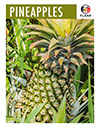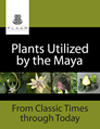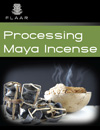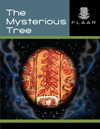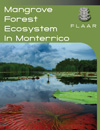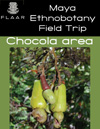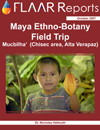The municipality of Santa María Cahabón, is a place with landscapes, mountains and rivers. This scenery gives rise to eco-tourism for nature lovers.
However it is worth mentioning that the Municipality has little infrastructure as access roads are unpaved and in rainy weather become slightly impassable (due to mud and to landslides; or due to the roads falling into the abyss below).
Regarding the hotel service currently has a hotel called: San Angelo, with basic economical services and 6 bedrooms for 12 people. The owner is pleasant, honest, and knows what is going on in the entire Cahabon area.
On Saturday July 26, the FLAAR group traveled on an expedition to Cahabón via Senahú, Alta Verapaz, in order to get to know the village Balamté. Our surprise, upon arriving that night our guide Hans Gonzalez Véliz told us there was a place that we should know called: La Canasta and had some interesting caves to see.
La Canasta cave, Alta Verapaz, makes a nice family weekend visit
The next day at 7:30am in a Toyota Tacoma double-cabin 4WD pickup truck we undertook this journey, with all our equipment for caving (rope, flashlights, photographic cameras and field shoes). We traveled about 1 hour from Cahabon, Hans spoke with the president of the community to give us permission to explore the caves, paid Q5.00 per person (7 persons) and were assigned three guides.
We parked the car, loaded the equipment and started walking, first had a tree trunk bridge over a river, then walked 10 minutes to see a cave with two entrances where the river had its way out. The night before there had been a storm, so the river was swollen and thus we could not enter the cave to explore inside. This cave has a name: Oxec (river) cave.
We walked another 15 minutes to reach a village called Tuilá and there was "La Canasta". It is called Canasta because this place has literally shape of a basket, a bridge of probably limestone. At the bottom is the river water in a lake where no depth has been explored and the danger of the place not examined.
In addition to the Oxec and La Canasta cave there is another cave which is a ceremonial center for the Q'eqchi region, where Q’eqchi’ Mayan people practice rites and thanks for the corn crop. The peculiar thing about this cave is that it is fairly large and the first entry is like a cathedral living room and second living stalactites and stalagmites have giant and impressive forms.
Caves may have Maya relics
It is not appropriate to touch any Mayan antiquities in any cave. And it is definitely not proper to take any. We focus on caves as a respite from being at a desk in an office most of the week, so we enjoy caving on weekends. We often go with local Q’eqchi’ families, as a family weekend trip.
As a child I was brought up in the Ozark Mountains of Missouri. We had both caves and cenotes there, just like in Peten, Guatemala and much of the Yucatan Peninsula, Mexico. We had three caves behind our house (from where we got drinking water). There was a cenote about 100 meters from our house.
Plus there were cave springs all around the property (since this is a Karst geology, very similar to parts of Izabal, Alta Verapaz, and Peten, Guatemala).
Two of my brothers are also cave explorers for holidays and weekends. There is a lot of potential for cave eco-tourism in Guatemala. Eco-tourism provides jobs for the local Q’eqchi’ Mayan families. So this web page is to show you a cave system (La Canasta and nearby Oxec river mouth cave) which are well worth visiting.
Be sure to present yourselves to the local community leaders. And be especially sure to hire local guides from the village.

"La Canasta"
Most recently updated Nov. 23, 2015 by Nicholas Hellmuth
First posted July 29, 2014 by Ilena Garcia








